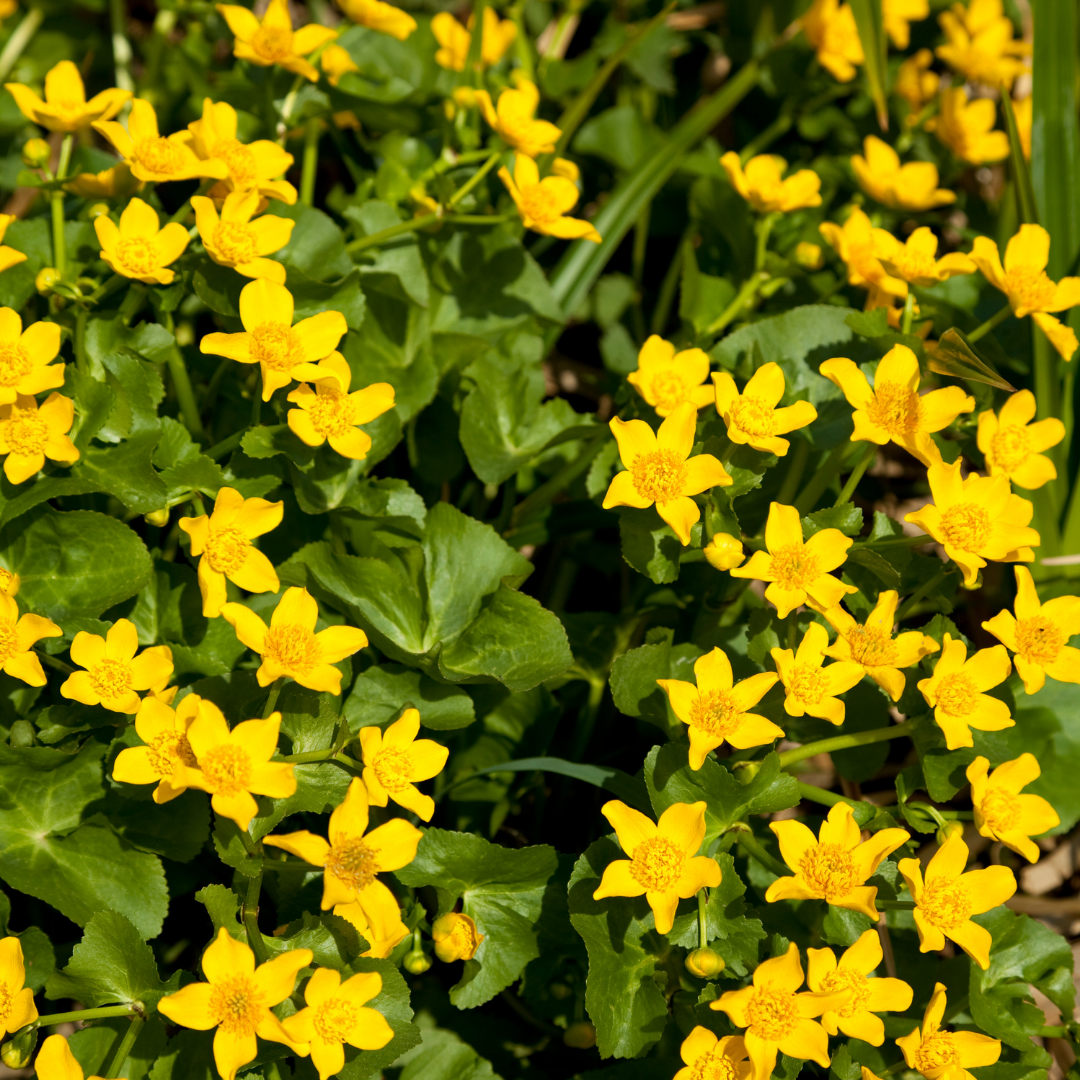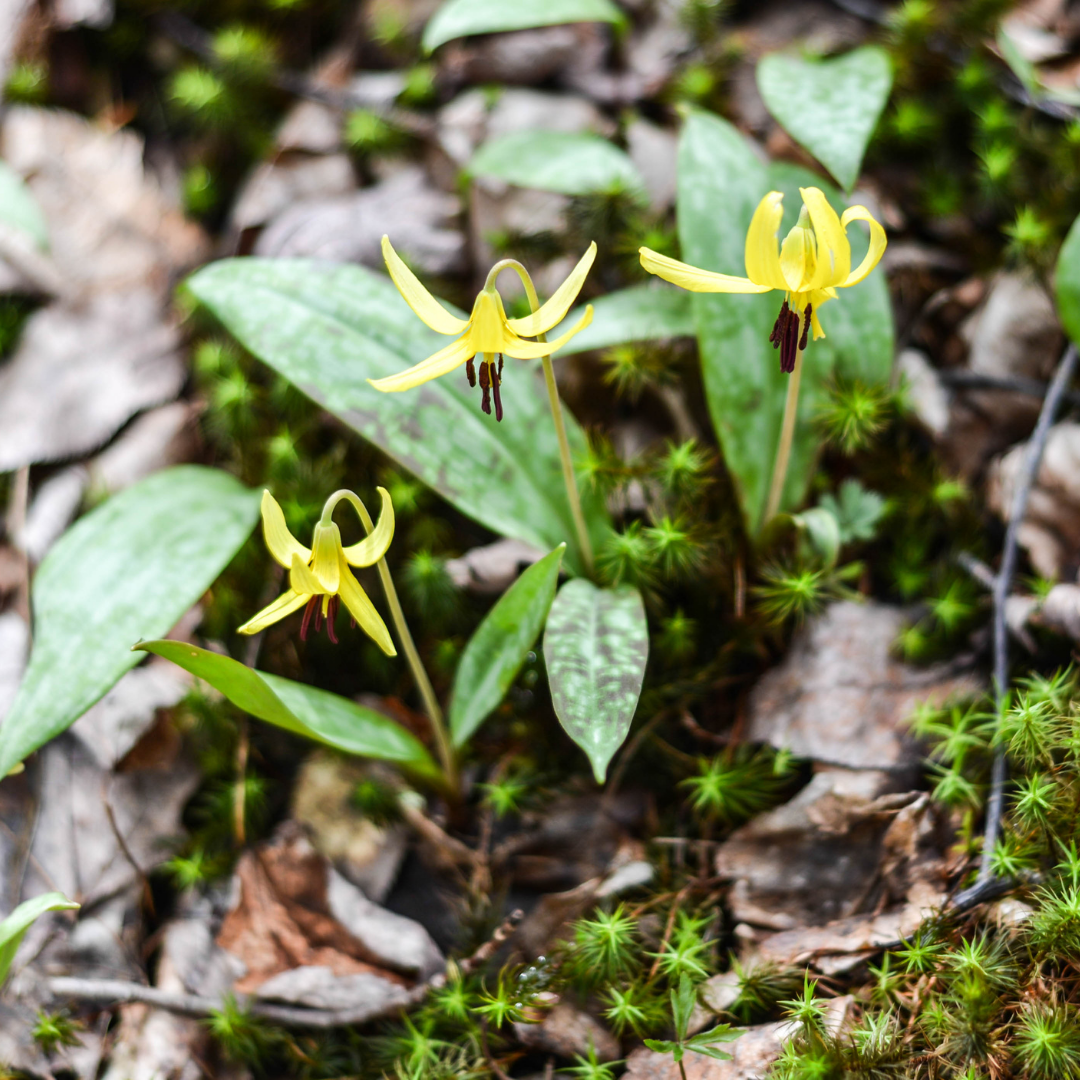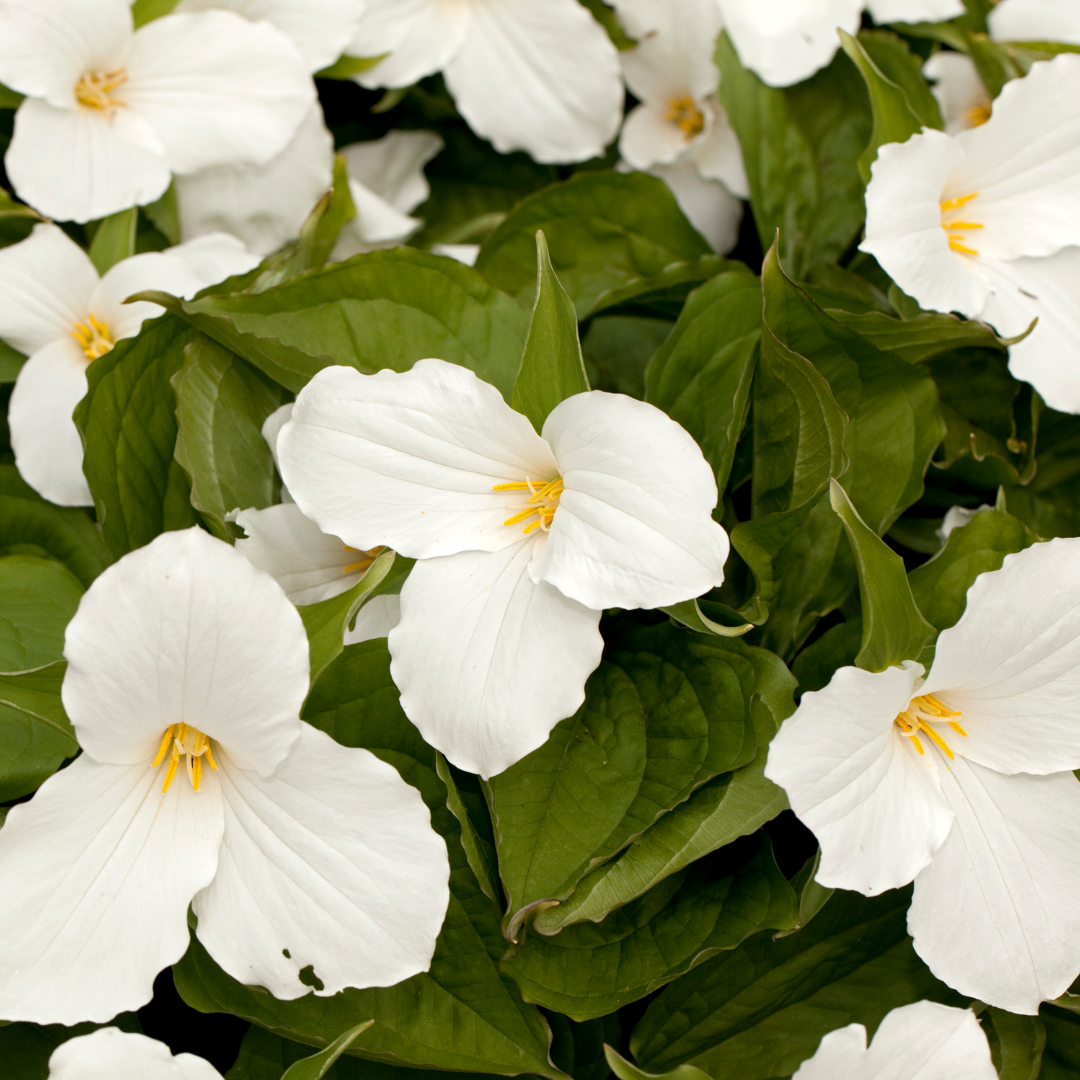Wildflowers
Signs of Spring: Wild Flowers
Surely a calendar can tell us when spring arrives, but we can use all of these signals from the natural world to see that spring is indeed on its way. Take time this season to explore the trails and look for your own clues about impending changes. Plants to look for are:

Marsh marigold is part of the buttercup family. The leaves are heart-shaped with a shiny yellow flower that is similar to a buttercup rather than a marigold. As its name implies, look for this yellow spring flower around the wildflower loop on the Greenway Trail.

Trout lily gets its name from the pattern that appears on its leaves. The brown and green colors look similar to that of a brook trout. A trout lily has one leaf until it’s fully matured into a single yellow flower with six petals. Look for these flowers along the trails in the woods.

Trillium are slow growth plants that need the spring’s warm sunlight to awaken from dormancy. This plant is also called toadshade because its leaves resemble that of a toad-shaped umbrella. Look for a single white or maroon flower that’s sitting on top of its leaves or a flower raised from a short stalk while walking through the woods.

Cut-leaved toothwort is a member of the mustard family and makes a quick appearance in late April. The leaves are slender with jagged leaves and has a cluster of small white flowers at the top of a single stem. Look for these flowers while walking in the woods. You might spot them next to trout lilies and trilliums.

Coltsfoot is part of the daisy family and looks similar to dandelions. The name translates to “son before the father,” highlighting the odd cycle of flowering first with hoof-shaped leaves appearing after the flowers die off. Colts foot tolerates wet soil, so look for this plant around the banks of Walnut Creek, the swamp at Wasiesky Teaching Deck, and wet areas in the woods.

Common blue violet is a low-lying plant and an early source of nectar for bees and other pollinators. The flower color ranges from dark purple to off-white with heart-shaped leaves. This plant spread quickly along the forest floor. Look for common blue violets in shady areas of the woods, and along Walnut Creek.
As you walk around Asbury Woods to look for signs of spring, be sure to leave flowers undisturbed. Some species are very delicate and may not regrow if plucked or trimmed. You can document plant growth by taking down notes of progress, or by taking pictures with your phone or other device.
